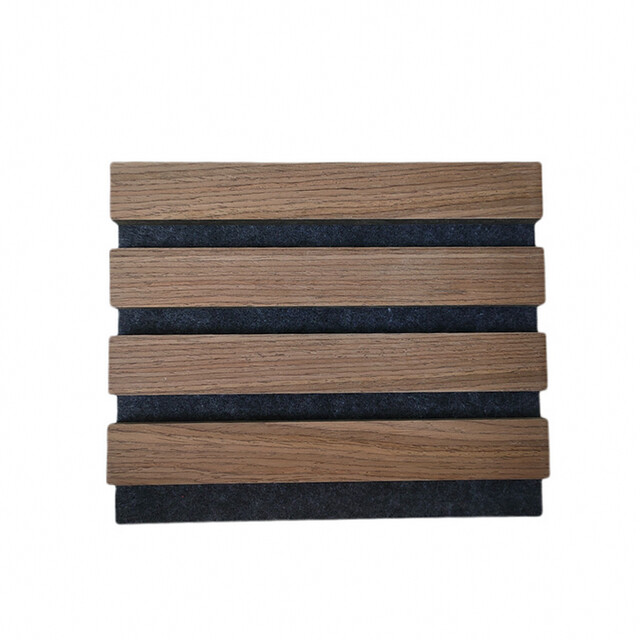Acoustic Wood Panel for Soundproofing: An In-depth Review
Wood acoustic treatment tile, Wooden sound-dampening board, Wood noise re Wooden sound-dampening board duction panel, Acoustic wood board, Timber acoustic wall panel – all these terms are familiar to those seeking effective soundproofing solutions. However, the use of Acoustic Wood Panels has gained popularity in recent years due to their exceptional performance and versatility.
Manufacturing Process:
Acoustic Wood Panels are typically made Acustic Wall Panel from high-quality medium-density fiberboard (MDF) or plywood. These panels are engineered by bonding multiple layers of wood fibers together using heat and pressure. This manufacturing process ensures durability and enhances the sound absorption properties of the wooden slats.
Key Features:
1. Excellent Sound Absorption: The unique design and construction of Acoustic Wood Panels allow them to absorb a wide range of frequencies effectively.
2. Natural Aesthetic Wood acoustic treatment tile s: With their wooden finish, these panels provide a visually appealing solution while maintaining a warm and inviting atmosphere in any space.
3. Versatility: Acoustic Wood Panels can be used in various applications such as recording studios, home theaters, restaurants, offices, auditoriums, and even residential spaces.
4. Environmental Friendline

ss: Made from sustainable materials like MDF or plywood derived from renewable sources helps reduce carbon footprint compared to synthetic options.
Advantages:
1. Improved Room Acoustics: The efficient sound absorption capability reduces echo and reverberation within a room resulting in enhanced audio clar Acoustic Wood Panel ity.
2. Easy Installation: These lightweight panels can be easily mounted on walls or ceilings with specialized hardware provided by manufacturers.
3. Customizable Wooden Slat Panel Designs: Manufacturers offer a wide range of color options along with custom shape and size configurations allowing architects/designers flexibility for creating unique acoustic environments.
Using Acoustic Wood Panels:
To achieve optimum results when using Acoustic Wood Panels for soundproofing purposes:
1. Identify Problematic Areas – Assess areas where unwanted noise transmission occurs or where sound reflections are causing discomfort.
2. Deter

mine Panel Placement – Strategically place panels on walls, ceilings, or even as room dividers to break up the path of sound waves and absorb Wood noise reduction panel unwanted noise.
3. Combine with Other Materials – Consider integrating Acoustic Wood Panels with other sound-absorbing materials like fabrics, carpets, or rugs for enhanced acoustic performance.
Choosing the Right Product:
When selecting Acoustic Wood Panels for your project:
1. Consult an Expert – Seek advice soundproof panels company from professional acousticians who can guide you in choosing the right panel thickness, density, and installation techniques based on your specific requirements.
2. Evaluate Acoustic Performance – Pay attention to noise reduction coefficients (NRC) and sound transmission class (STC) ratings provided Acoustic Wood Panel by manufacturers to ensure optimal sound control in respective environments.
3. Consider Style Preferences – Look for options that complement your interior design scheme while offering effective acoustic properties.
In conclusion, Acoustic Wood Panels provide an excellent solution for controlling excessive noise levels and improving room acoustics in various settings. Their manufacturing process ensures Acoustic Wood Panel durability and their natural aesthetics enhance the visual appeal of any space. By following proper installation techniques and considering expert advice when selecting these panels, one can optimize their effectiveness significantly
